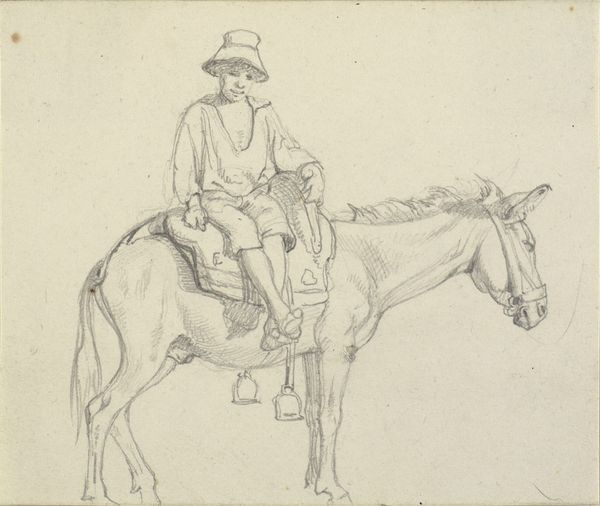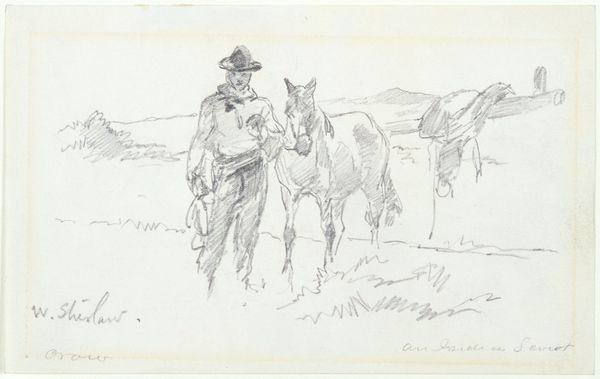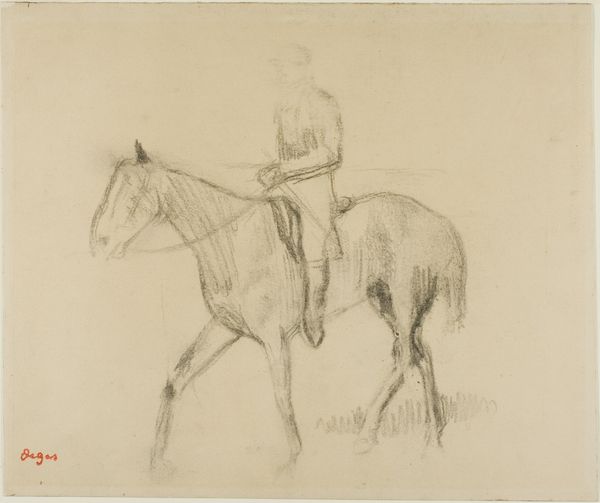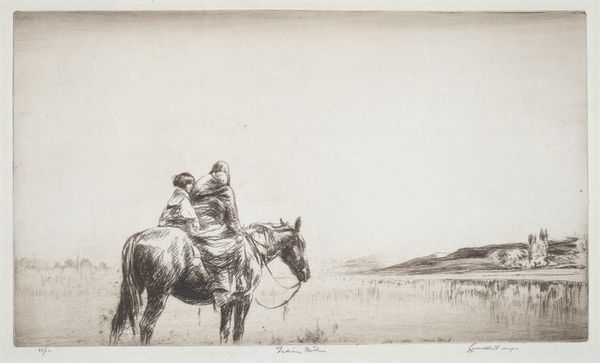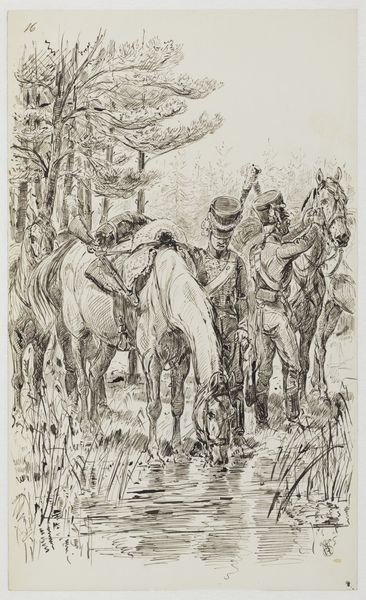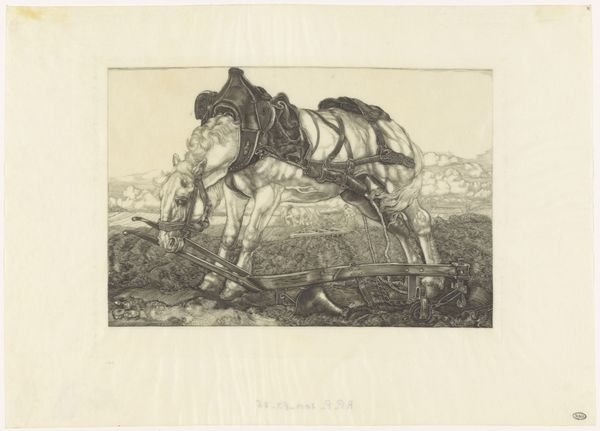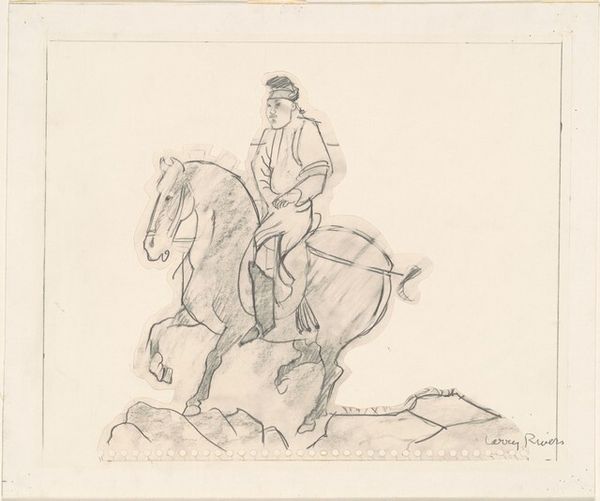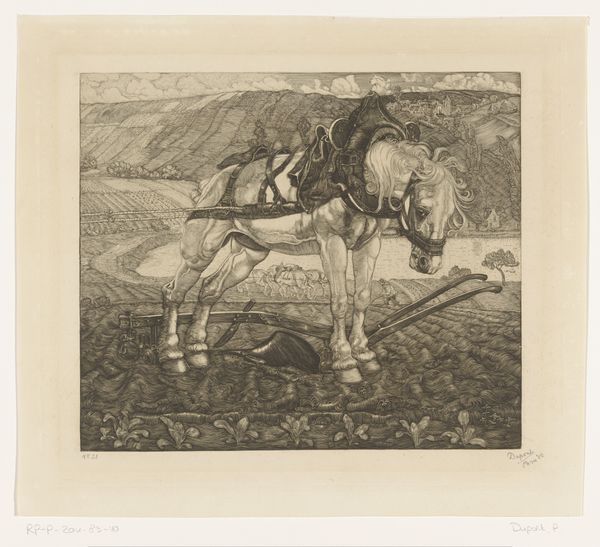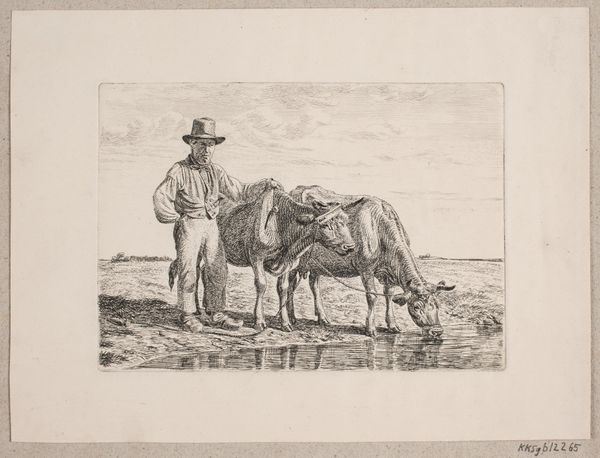
drawing, plein-air, ink, pen
#
17_20th-century
#
drawing
#
plein-air
#
pencil sketch
#
landscape
#
figuration
#
ink
#
expressionism
#
pen
Copyright: Public Domain
Editor: Here we have Adolf Jansen's "Tränke. Soldat mit Pferd am Wasser," created in 1916 using pen and ink. There's a certain stillness, almost a resignation, that I see in the soldier's posture and the horse's bowed head. What strikes you when you look at this drawing? Curator: It's a poignant depiction, particularly considering it was created during the First World War. Look at the roughness of the lines, the frenetic energy conveyed despite the stillness you mention. I see this drawing as speaking to the anxieties and the brutal realities soldiers faced daily. How do you think the context of the war influences our understanding of this image? Editor: I hadn't thought about the frenetic energy so much, but you're right, the hatching gives the whole scene a vibrating feel. Do you think that this sketch, being plein-air, has significance? Curator: Absolutely. The decision to work outdoors, in the midst of potential danger, speaks volumes about the artist’s intention to capture the lived experience of war directly. Jansen wasn't interested in glorifying conflict, but presenting the weary everyday struggles. Think about the logistics, the constant movement, and how this sketch could also be considered as a personal documentary project, created at the frontline. Editor: So it's not just a picture of a soldier and his horse, but a visual record of the toll of war, brought to us from on location, even. Thank you. Curator: Precisely. Considering the historical and cultural backdrop truly deepens our appreciation. I see a common human moment portrayed. Something all of us experience when weary. The drawing also shows how art documents our most horrific and beautiful human moments for public audiences.
Comments
No comments
Be the first to comment and join the conversation on the ultimate creative platform.
